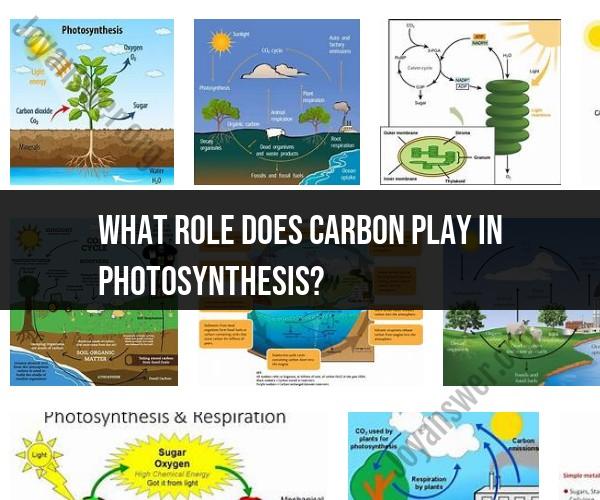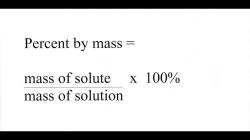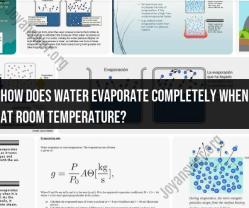What role does carbon play in photosynthesis?
Carbon plays a central and essential role in the process of photosynthesis, which is the biochemical process by which plants, algae, and some bacteria convert light energy into chemical energy in the form of glucose and oxygen. The role of carbon in photosynthesis is as follows:
Carbon Dioxide (CO2) as a Raw Material:
- Carbon dioxide is one of the key raw materials required for photosynthesis. It is obtained from the atmosphere through small openings in plant leaves called stomata.
- During photosynthesis, carbon dioxide molecules are captured and incorporated into organic compounds within the plant.
Carbon Fixation:
- Carbon fixation is the process by which carbon dioxide (in the form of CO2) is converted into organic molecules within the plant, primarily in the chloroplasts.
- The enzyme ribulose-1,5-bisphosphate carboxylase/oxygenase (RuBisCO) plays a critical role in capturing CO2 and combining it with a five-carbon compound, ribulose-1,5-bisphosphate (RuBP), to form a three-carbon compound, 3-phosphoglycerate (3-PGA).
Formation of Organic Molecules:
- After the initial fixation of CO2, a series of enzymatic reactions occur in the Calvin Cycle, which is a part of photosynthesis.
- Carbon atoms from CO2 are rearranged and utilized to synthesize various organic molecules, including glucose (a sugar) and other carbohydrates.
- These organic molecules store energy in the form of chemical bonds and serve as the primary source of energy for the plant's growth and metabolism.
Energy Storage and Building Blocks:
- The organic molecules, including glucose, created during photosynthesis serve multiple functions:
- They are used as an immediate energy source for cellular processes within the plant.
- They serve as building blocks for more complex organic compounds needed for plant growth, including cellulose (a structural component of plant cell walls) and various other macromolecules.
- The organic molecules, including glucose, created during photosynthesis serve multiple functions:
Release of Oxygen (O2):
- A significant byproduct of photosynthesis is the release of molecular oxygen (O2) into the atmosphere.
- The oxygen is generated when water molecules (H2O) are split during the light-dependent reactions of photosynthesis, releasing oxygen and providing electrons for the reduction of carbon dioxide to form organic molecules.
In summary, carbon dioxide (CO2) serves as the carbon source for photosynthesis, where it is fixed and converted into organic compounds, primarily glucose and other carbohydrates. This process not only provides energy for the plant but also results in the release of oxygen into the atmosphere, making photosynthesis a crucial process for both energy production and oxygen production on Earth.
Carbon plays a crucial role in photosynthesis. It is the main building block of the sugar molecules that plants produce during photosynthesis. These sugar molecules are used by plants for energy and growth, and they are also the basis for the food chain.
Photosynthesis is a process that uses sunlight, water, and carbon dioxide to produce oxygen and sugar. The first step in photosynthesis is the absorption of sunlight by chlorophyll, a green pigment found in plant cells. The chlorophyll uses the energy from sunlight to split water molecules into hydrogen and oxygen. The hydrogen atoms are then used to reduce carbon dioxide to sugar.
Carbon dioxide is a gas that is found in the atmosphere. Plants absorb carbon dioxide through their leaves. The carbon dioxide then diffuses into the plant cells, where it is used in photosynthesis.
The sugar molecules that are produced during photosynthesis are used by plants for energy and growth. The sugar molecules are also stored in the plant's cells and tissues. When animals eat plants, they consume the sugar molecules that have been produced during photosynthesis. The sugar molecules are then used by animals for energy and growth.
Photosynthesis is essential for life on Earth. It is the process by which plants produce the food that animals and humans need to survive. Photosynthesis also helps to clean the air by removing carbon dioxide from the atmosphere.
In addition to its role in photosynthesis, carbon also plays an important role in the global carbon cycle. The carbon cycle is a process by which carbon is exchanged between the atmosphere, the oceans, and the land. Plants play a key role in the carbon cycle by absorbing carbon dioxide from the atmosphere during photosynthesis.
Photosynthesis is a complex process, but it is essential for life on Earth. Carbon plays a crucial role in photosynthesis by providing the building blocks for the sugar molecules that plants produce.











